Rod Miller's Blog, page 25
August 28, 2017
Once in a lifetime.
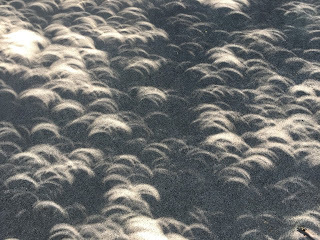
Here we go again—completely ignoring the joys of reading and writing to wander off into the trivia of life. Sorry, I can’t resist.On September 21, the good people of the good ol’ USA were treated to a coast-to-coast total eclipse of the sun. It doesn’t happen very often. For some of us, it will probably never happen again. So I thought I’d comment on the spectacle.Where we live in Utah, 91% of the sun was obscured, leaving only a tiny crescent of the orb visible through our approved eclipse-viewing glasses. My wife and I sat on the driveway looking up from time to time for quite a spell.But what we found most intriguing wasn’t in the sky—it was on the ground, at our feet.Shading much of our driveway is a big (and messy) tree. Some kind of elm, we think. Where the sun peeked through the thick foliage, the tree created hundreds of “pinhole projectors” that cast the eclipsing sun on the concrete surface of the driveway. That’s what you’re seeing in the photo above—each of the many crescents is an image of the eclipsed sun. We thought it was kind of neat, so we took a bunch of pictures of it. Later, on TV, one of the NASA experts mentioned the phenomenon. I doubt I’ll ever see it again.Next time, it’s back to reading and writing. Unless, that is, some other strange and spectacular thing happens.
Published on August 28, 2017 09:55
August 19, 2017
Picky eater.
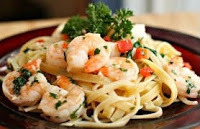
Warning: what follows is all about eating and has nothing to do with reading.Often at mealtime, and at meal-planning time, I am accused of being a picky eater. I disagree. If you ask me, I’m just a man of simple tastes. I can’t help it. I was raised that way. The town I grew up in was so small we did not eat pasta there. We had macaroni. And we had noodles. But if someone would have said “pasta” we would not have had any clue what that person was talking about. Bread was bread. It was usually homemade, sometimes store-bought, but always just plain old bread. Nothing “artisan” and no one ever served up a loaf sprinkled with stuff that looks like it came off the bottom of a bird cage. I see that sort of thing a lot now. But I don’t eat it. Vegetables mostly came in in the form of potatoes, peas, beans, corn, and carrots. Salads were occasional and as often as not made with potatoes or macaroni rather than green things—and none of that green stuff was ever kale or arugula, to my knowledge. I only remember being served artichokes one time, and that was on a cattle ranch in Nevada. Which surprised me, and still does. Meat was a staple. Because we raised it, it was always available. Roast beef and steaks and hamburger and soup bones. Pork chops and roasts and ham and bacon and side pork. Lamb (which I never cottoned to; same with goat) and deer meat. Lots of chickens (and eggs), fried. Nowadays I’ve narrowed my meat menu down to beef and pork, with chicken (yardbird, as my brother calls it) very rarely, still fried. As for other poultry, I get turkeyed out for the year about three days after Thanksgiving. Fish and seafood were pretty much unknown at our house, except the occasional “fish stick” or the rare trout we caught. We seldom ate out when I was a kid. A trip to the hamburger stand when out shopping was about it. In fact, I thought it unusual that people would go out to eat for no particular reason.At our house nowadays we eat food somebody else cooked quite often, and it’s usually just plain old food. I’m told it’s because I’m a picky eater. But, truth be told, I am simply not interested in strange cookbook foodstuffs that usually end in the letter “i” and hide under some kind of sauce, and where “plating” and “presentation” are more important than taste.
Published on August 19, 2017 12:21
August 8, 2017
Another Rawhide Robinson cover up.
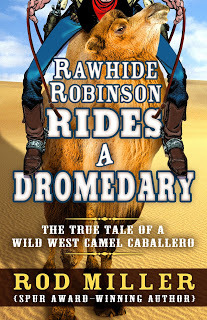
Five Star, publisher of my Rawhide Robinson novels, recently sent the cover for the next book featuring the adventures of the extraordinary ordinary cowboy. That’s it, up there.The book is due for release in February and I am looking forward to seeing it in print. It is always exciting (and somewhat intimidating) to see something you’ve seen about a million times on your computer screen show up as a genuine, actual, ink-on-paper book. Read a bit more about Rawhide Robinson Rides a Dromedary: The True Tale of a Wild West Camel Caballero (and the other Rawhide Robinson novels). And consider putting the first two in the collection on your Christmas list for readers from junior high through geriatrics who would enjoy tall tales, Old West adventures, and cowboy humor. And save room on your book shelves for the next one, come February.
Published on August 08, 2017 07:26
July 29, 2017
Lies They Tell Writers, Part 40: Characterization is key.

There is no shortage of advice for fiction writers about characterization. You couldn’t throw a loop at a writers’ conference without catching a session about character development. You’ll hear endless discussions comparing implicit and explicit characterization. You’ll hear about archetypes and character voice. Introduction and emergence. And other fancy ways of talking about the people you make up to populate your made-up stories.The problem, as most successful writers will admit, is that characters have a way of saying and doing things you never intended. They routinely violate the commandments you laid down in your “character bible.” They’ll often thumb their noses at you and do what they please, whether you like it or not. Sometimes, characters simply refuse to develop the way you planned. When that happens, you know you’ve done your job. That’s because characters that take the bit in their teeth and run off with you are more like real people than carefully crafted, methodically developed, perfectly polished props. Come to think of it, when it comes to successful character development, being a writer is a lot like being a parent.
Published on July 29, 2017 08:54
July 20, 2017
Range Writers Extraordinaire.
Last night found us in Richfield, Utah, to enjoy some fine cowboy entertainment. Stepping onto the stage were some of the best wranglers of Western words you’ll find anywhere.
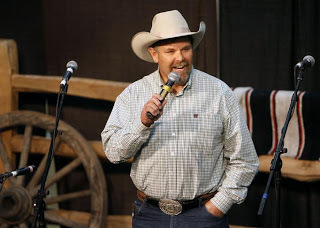
Andy Nelsonof Wyoming pens some of the funniest cowboy poetry going. He’s also adept at more reflective verse, and is author of an enjoyable book, Ridin’ with Jim, built around growing-up experiences with his father.
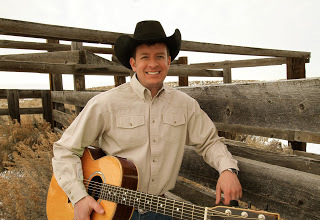
At times, Andy teams up with Utah singer/songwriter Brenn Hill, trading poems and songs on stage. Brenn has been mentioned here before, lately as composer of “And the River Ran Red,” using words I wrote. Brenn’s ability as a songwriter covers the West both wide and deep, and his music, recorded on some dozen albums, earns him well-deserved recognition.
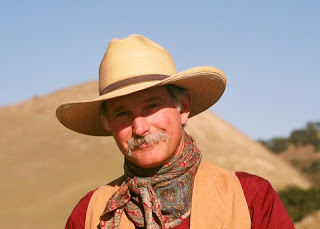
California cowboy Dave Stamey has won every award available for a Western singer/songwriter, many of them more than once. Dave’s insightful writing, virtuoso guitar licks, and comfortable presence on stage are always enjoyable.There are plenty of cowboy singers and poets regaling the world with their works and I appreciate the talents of many of them. But you’d have to cover a lot of range to find the equal of these three—not only for their abilities as entertainers on the stage, but for the riveting qualities of the words they write. And the fact that I count them all as friends is the result of my admiration, not the cause.

Andy Nelsonof Wyoming pens some of the funniest cowboy poetry going. He’s also adept at more reflective verse, and is author of an enjoyable book, Ridin’ with Jim, built around growing-up experiences with his father.

At times, Andy teams up with Utah singer/songwriter Brenn Hill, trading poems and songs on stage. Brenn has been mentioned here before, lately as composer of “And the River Ran Red,” using words I wrote. Brenn’s ability as a songwriter covers the West both wide and deep, and his music, recorded on some dozen albums, earns him well-deserved recognition.

California cowboy Dave Stamey has won every award available for a Western singer/songwriter, many of them more than once. Dave’s insightful writing, virtuoso guitar licks, and comfortable presence on stage are always enjoyable.There are plenty of cowboy singers and poets regaling the world with their works and I appreciate the talents of many of them. But you’d have to cover a lot of range to find the equal of these three—not only for their abilities as entertainers on the stage, but for the riveting qualities of the words they write. And the fact that I count them all as friends is the result of my admiration, not the cause.
Published on July 20, 2017 12:49
July 9, 2017
My Favorite Book, Part 9.
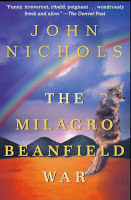
The Milagro Beanfield War by John Nichols is a strange book. It can make you laugh so hard you’ll fall off your chair. And it can make you cry. The characters in the story are quirky, odd, strange, eccentric, and altogether realistic and believable. Nichols captures the dialect and vernacular of the people who have populated the northern New Mexico mountains for centuries in ways that tickle the ear. Equally well-drawn are the gringo interlopers who, in the name of “progress,” attempt to upset the delicate balance between people and the land.While there are serious issues at work here, treated with the gravity they deserve, the missteps and mistakes of combatants on all sides add humor and hilarity to the telling. Pride and poverty, affluence and hubris, nature and the supernatural, legalities and scofflaws all play a role, and together they weave a wonderful tale of a town trying to survive in spite of itself.
Published on July 09, 2017 13:33
June 28, 2017
Kansas City, here we come.
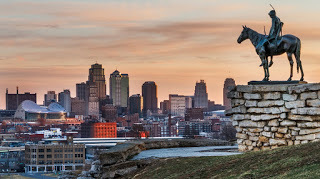
That title—a stolen line from a classic song—isn’t true, but it is more melodious than the factual “Kansas City, there we’ve been.” Last week was the annual Western Writers of America convention, held, as you have probably guessed, in Kansas City. Always a high point in the year, the WWA convention gives me the chance to learn a few new things, meet a few new writers, and, best of all, spend some time with writers I’ve met at earlier conventions and who have become friends. I find that hanging around with people who are smarter than I am (they are not hard to find) is always stimulating.The only downside to the convention is that the family members who travel with me get to spend their days seeing all manner of interesting places and things while I am at meetings. But I do get to tuck in a few such visits now and then and see things I’ve never seen before—like the Arabia Steamboat Museum, home to 200 tons of artifacts recovered from a steamboat that sank in 1856 and was recovered 132 years later from deep under a cornfield. More about that another day. Next summer, WWA convenes in Billings, Montana. I’ve been there for one reason or another several times over the years, and am already looking forward to returning to Big Sky Country.
Published on June 28, 2017 10:08
June 18, 2017
Lies They Tell Writers, Part 39: Believe in yourself.

People who attempt to write a book (or a short story, magazine article, movie, poem, or song) harbor the belief that they can pull it off. They’ve convinced themselves they can spend the requisite time in a chair, are confident they can string together the necessary number of words, and trust they can slog through the revisions and rewrites required. Believing in yourself is a good thing. An essential thing. Without that belief, no word would ever get written.But believing in yourself is only half the story. If that.It is equally important, perhaps more important, that you doubt yourself. I think that bears repeating: If you want to be a writer, you must doubt yourself.You must question every word. Is it the best word? Would another word say it better? Would a metaphor, a simile, an allusion, or other indirect way of telling something work better than saying it straight out? Is that the way this character would say that? Do you really think that character would do this?And so on.Writing—at least writing well—is a continuous process of self-doubt. And that’s just as important—if not more so—than believing in yourself.
Published on June 18, 2017 06:17
June 9, 2017
Rawhide Robinson Rides the Interweb.
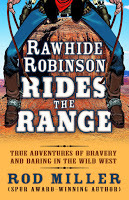
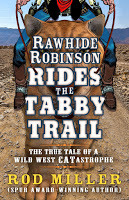
Rawhide Robinson, the ordinary cowboy who finds himself involved in all manner of extraordinary events, now has his own web site.Visit www.RawhideRobinson.com and you’ll learn about the Wild West’s wildest cowboy. You can watch (in a matter of seconds) short videos about the books Rawhide Robinson Rides the Range: True Adventures of Bravery and Daring in the Wild West (winner of a Western Writers of America Spur Award) and Rawhide Robinson Rides the Tabby Trail: The True Tale of a Wild West CATastrophe(winner of a Western Fictioneers Peacemaker Award and finalist for a Spur Award). And you can read brief excerpts from those books as well as Rawhide Robinson Rides a Dromedary: The True Tale of a Wild West Camel Caballero, slated for release in February, 2018. There’s no other cowboy quite like Rawhide Robinson. Pay him a visit online at www.RawhideRobinson.com. And, of course, you can get to know him better by buying the books. They make fine entertainment for readers from junior high to geriatrics. (If I do say so myself.)
Published on June 09, 2017 06:44
May 31, 2017
Where palette meets palate.
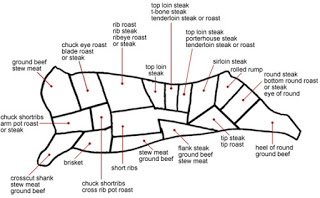
For the past several years I have been fascinated by the fascination with “Certified Angus Beef.” It shows up on all manner of menus, from fine dining establishments to fast food emporiums. In supermarket meat cases, too. It’s supposed to mean something.I don’t get it. Growing up, we raised cattle. Herefords. (Red with distinctive patterns of white.) I worked for a rancher who had some Herefords, some Angus (black), Galloways (black), and a bunch of crossbreds (mostly black with white faces and markings—black bally, we called them). My dad punched cows for a big outfit that had cows of many colors and crosses—Charolais (white), shorthorn (mostly red), and the aforementioned breeds. There were a few exotic breeds like Simmentals around, but not so many as nowadays. We ate beef from cattle of all colors. Some meat was better than other meat, but that had to do with how and what the cow was fed rather than the color of its hide. In fact, once a cow’s hide has been peeled you would be hard pressed to know from the meat inside what color the cow used to be on the outside—if you could know at all.I once heard the great cowboy singer and songwriter Dave Stamey say on stage that he admired the people behind the “Certified Angus Beef” campaign for convincing us of the cockamamie notion that a color has a flavor. I think he’s right.
Published on May 31, 2017 10:46



